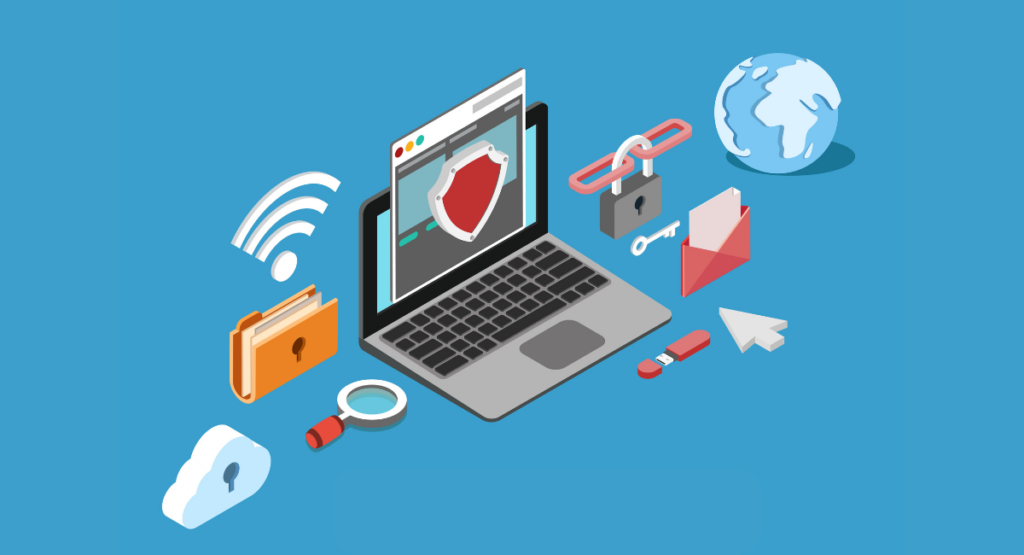Multi-factor authentication is a security system that aims to provide access control through successful authentication and verification of the user's identity by two or more of the independent categories of credentials, which facilitate login or any other kind of transaction.
Adding this step to one's approach increases security and makes one's user data, along with the integrity of the system, safe from unwanted threats and unauthorized access.
Setting-up Multi-Factor Authentication in Business and Life is critical for securing online transactions and sensitive information, sophistications cyber threats are increasingly taking.
Importance of Multi-Factor Authentication

Enhancing online security
As the name suggests, Multi-factor Authentication hardens online security by requiring a user to provide more than one form of evidence to authenticate identity.
Doing so makes it very hard for the unauthorized access to reach a device, network, or database that is the target. Therefore, when one of the factors gets compromised, an attacker still has at least one more barrier to breach and thus get access to the targeted resource.
MFA is particularly effective against a large number of online threats, among them phishing, social engineering, or brute force attacks.
Protecting sensitive information
The integrity of sensitive information is paramount in this digital information era characterized by information breaches and data theft. MFA provides a barrier between access to sensitive information financial data, private records, confidential business memos, etc and casual browsers.
That way, in case your password is either lost or hacked, it will prevent access to such information. MFA naturally provides a very critical element of protection in keeping users' personal and work data safe.
Different Authentication Methods
Two-factor authentication
Two-factor authentication is a common form of MFA that involves two distinct forms of identification. Normally, it comprises something you know, like your password, coupled with something you have, such as a smartphone app to generate time-based codes, or something you are, like your fingerprint.
Biometric authentication
Biometric authentication makes use of unique physical traits, such as fingerprints, facial recognition, retina scans, or even voice recognition to identify individuals.
The biometric attribute is close to impossible to replicate or fake; hence, the method is very secure. It has been gaining much popularity currently in terms of smartphone and laptop security and also to provide improved access control at areas of concern within a business.
One-time passwords
One-time passwords are automatically generated codes sent to a user's mobile device via SMS or through a dedicated app and are usually valid for only one login session or transaction.
This technique provides additional security because the password itself keeps on changing, is only valid once, and hence becomes useless to hackers even if they intercept it.
OTPs find extensive applications in banks, financial institutions, and various other services where consumer data protection is most necessary.
Benefits of Implementing Multi-Factor Authentication

Reduced risk of unauthorized access
Implementation of MFA will drastically bring down the possibility that people unauthorized can get access to sensitive systems or information.
With MFA, a layered defense is created that requires more than one form of verification, hence making access by unauthorized individuals quite difficult.
This is an important protection mechanism in that it blocks over 99.9 percent of account compromise attacks, hence access to critical data and systems is strictly controlled and limited only to persons authorized.
Enhanced data protection
Additional layers in MFA, therefore, boost the protection of data against cyber threats. With every authentication factor comes a robust security posture to protect user data against breaches and theft.
In case, for instance, a password is breached, there will be a backup check in place to ensure that the information remains safe maybe a hardware token or even a biometric check.
Compliance with security regulations
Adoption of MFA helps the organization stay compliant with several security regulations and standards, such as the GDPR, HIPAA, PCI DSS, and others.
In such cases, these regulations for advanced security measures usually result in the use of MFA for appropriately protecting data belonging to consumers and users.
Compliance not only avoids potential fines and consequent legal hassles but also builds trust with the customers by demonstrating seriousness in keeping their information safe.
Best Practices for Setting Up Multi-Factor Authentication
Choosing the right authentication methods
When setting up MFA, it's essential to choose the right types of authentication factors that meet the specific needs of an organization and its users. Commonly used factors include:
- Knowledge factors (what the user knows), like passwords or PINs
- Possession factors (what the user has), such as security tokens or smartphone apps
- Inherence factors (what the user is), such as fingerprints or other biometrics
Selecting the appropriate mix of factors can maximize security without compromising user convenience.
Educating users on the importance of MFA
To successfully implement MFA, users need to be educated about the importance and the benefits of using multi-factor authentication.
Training on how MFA works to protect their data at both the personal and professional levels, together with trainings on step-by-step usage, will be very useful.
Regular educational updates/refreshers may also be utilized to keep levels of compliance and effectiveness at a high level.
Implementing MFA across all online accounts
MFA should be implemented on all online accounts within the organizational boundary. This includes not only email and internal systems but also cloud-based applications and services applied by the organization or business.
It provides uniform coverage of MFA to avoid weak spots in the security infrastructure where attackers could hvad Illustrated gain unauthorized access.
Challenges and Solutions in Implementing Multi-Factor Authentication
User resistance to MFA
The first challenge in the implementation of multi-factor authentication is user resistance. Most users consider MFA inconvenient and intrusive where it reshuffles their normal access procedures.
Most users are usually resistant to using new technologies as they believe that the extra steps taken for security purposes will affect their convenience in logging into critical accounts or slow them down in their work.
Integration issues with existing life
One of the major problems which occurs while rolling out MFA systems is integration with the existing IT infrastructures. In fact, many organizations do face technical difficulties due to the incompatibility of the new security protocols with other existing systems.
Common issues include real-time synchronization, stability, and scalability making it difficult to let all users have smooth and continual access.
Solutions for overcoming implementation challenges
In this regard, clear and sufficient communication and user training are necessary to combat such challenges. Organizations should make employees aware of the benefits of MFA adoption for them and what kind of sensitive data it saves them from.
For integration issues, organizations should think of going for those MFA solutions which can be custom-made and easily integrated into the existing IT infrastructure.
While implementing it, regular testing with feedback loops will enhance the implementation procedure, making sure that the installed system is in line with the particular needs of the organization.
Case Studies: Successful Implementation of Multi-Factor Authentication
Case study 1: Company X's experience with MFA
Company X was a large financial service provider facing various issues related to security and hence decided to implement the MFA. The firm implemented MFA across all organizational systems.
The staff showed some kind of resistance in the beginning as they were burdened by the extra steps of authentication. However, through persistent training and engagement sessions.
The staff started realizing the issue of cybersecurity and the role of MFA in protecting their operations. Within months, user compliance improved and unauthorized access attempts drastically reduced.
Case study 2: Individual user's account protection story
John is a freelance graphic designer who often has problems with security over the internet. After having gone through a few hacking attempts, he decided to turn on multifactor authentication for email and cloud storage accounts.
The results were immediate: unauthorized access attempts effectively ceased, and John was helped to stint manifoldly into security concerns. His story testifies to how even an independent user can be very strongly defended against common cyber threats by using MFA.
Future of Multi-Factor Authentication
Advancements in MFA Technology
First of all, there are constant developments in the security features of multi-factor authentication while keeping them easy to use. Biometric verification through fingerprints and facial recognition is especially gaining the need.
This growth, in particular, is being attributed to huge steps in artificial intelligence and machine learning. To make it easier on the user to get authenticated, behavioral biometrics is under development, which includes the patterns in users' behavior, such as typing speed or the way users handle their devices.
These very technologies that provide enhanced security also provide an enhanced user experience when they remove the need for repetitive manual input of authentication information.
Potential Trends in Online Security
The trends in online security more specifically, in MFA are changing into more integrated and user-friendly approaches due to the expanding and complex cyber-threats of today. This can be predicted to change in future trends as:
- Adaptive Authentication: This is where context-related information, such as location or time of access, drives the level of authentication required to balance security and ease of access to a resource.
- IoT Integration: Since Internet of Things devices have increased drastically over time, MFA methods should be much more tightly integrated in order to protect all possible access to a network.
- Zero Trust Models: This security model requires verification from every entity trying to the access the resources available in a network. It most probably will adopt more advanced MFA techniques for proper vetting.
These trends indicate that there shall be a need for adequate MFA systems as part of an effective cyber-security strategy that seeks to prevent any form of threat or unauthorized access to information.
Book a Demo and experience ContextQA testing tool in action with a complimentary, no-obligation session tailored to your business needs.
Conclusion
Information security is crucial in the digital world. Basically, the automation of multi-factor authentication will increase online security measures to a great extent, so that data remains quite aloof from unwanted reach.
A combination of factors something you know, something you have, something you are gives MFA one of the most formidable defenses against rising threats of cyber-attack.
The implementation of automated MFA systems is no longer recommended but rather mandatory against these sophisticated cybersecurity threats to keep personal and corporate information safe in the connected world.
Never forget that a security system does not derive its strength from any single element; rather, it gains strength from the layers of security that safeguard your digital identity and assets.
Also Read - What is UI (user interface) testing?
We make it easy to get started with the ContextQA tool: Start Free Trial.
